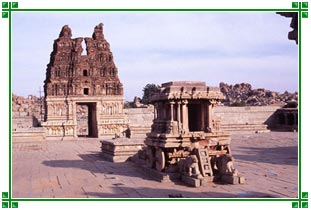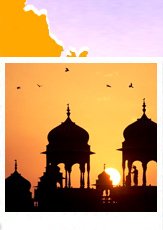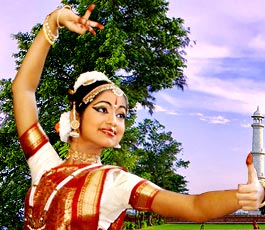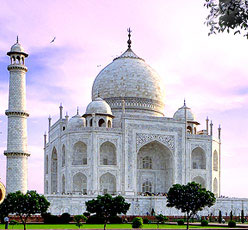 South India with its extensive coastline and seas and
oceans enveloping it from three sides provides an important link to the
trading community as far as the Mediterranean world and the Far East
since the ancient times. It had many important trading centers and
seaports reputed for their golden spices from Karwar to Kodungalloor
that attracted many foreign settlements in the area. The South Indian
coast of Malabar and the Tamil people of the Sangam age, dating nack
from 200 BC to 300 AD, had flourishing trade links with the Graeco Roman
world including Phoenicians, Romans, Greeks, Arabs, Syrians, Jews and
the Chinese. The extensive South India has seen the rise and decline of
several powerful kingdoms and empires such as those of Cholas, Pandyas,
Pallavas, Hoysalas, Cheras, Wodeyars, Chalukyas and the Vijayanagar
Empire.
South India with its extensive coastline and seas and
oceans enveloping it from three sides provides an important link to the
trading community as far as the Mediterranean world and the Far East
since the ancient times. It had many important trading centers and
seaports reputed for their golden spices from Karwar to Kodungalloor
that attracted many foreign settlements in the area. The South Indian
coast of Malabar and the Tamil people of the Sangam age, dating nack
from 200 BC to 300 AD, had flourishing trade links with the Graeco Roman
world including Phoenicians, Romans, Greeks, Arabs, Syrians, Jews and
the Chinese. The extensive South India has seen the rise and decline of
several powerful kingdoms and empires such as those of Cholas, Pandyas,
Pallavas, Hoysalas, Cheras, Wodeyars, Chalukyas and the Vijayanagar
Empire.The mention of ancient Cheras have been found in the Ashokan edicts found in Mysore, Karnataka as Keralaputras, who reigned from Alleppey to Calicut in present day Kerala. Padyas ruled the greater part of modern Madurai and Tinnevelly in the 1st century. Chalukyas ruled from Badami in modern Bijapur in Karnataka. Pulakesi-II who ruled the western Chalukyan Empire from 610 AD to 642 AD is known for the fierce battle he won against the mighty North Indian Emperor Harshavardhana in 637 AD and defeating the Pallava king Mahendra Varman I. The capital of Pallavas in Andhra Pradesh was known as Pallavapuri and they ruled around 1st and 2nd century AD. Mahendra Varman is also known for starting the famous cave temple of Mahabalipuram. His son Narasimhavarman defeated Pulakeshin II, his arch nemesis, and burned his capital at Badami.
Vinayaditya Hoysala, the founder of Hoysala dynasty, ruled the western region of Gangavadi for over fifty years. His grandson Ballala-I had his capital at Belur. King Vijayalaya made Tanjore, his capital and founded the Chola dynasty in 850 AD. His son Aditya-I was a mighty king who defeated the Pallava king Aparajita and the Kongu ruler Parantaka Viranarayana. The important centers of the Chola Kingdom were at Kanchipuram and Thanjavur. The most powerful ruler of the Chola synasty is said to be Raja Raja Chola, who ruled from 985 to 1014 AD and is known for conquering the Navy of the Cheras at Thiruvananthapuram. All the ancient Hindu kingdoms were very religious and mighty builders. One can still temples from their times built in typical Indian Dravidian temple architecture displaying exquisite sculptural wonders and artistic delights.
Chola dynasty ended by 13th century. The Vijaynagar rule spanned across almost two hundred years in Medieval India. The great Chinese scholar Huen Tsang visited the area at that time and recorded that its capital was situated on the shores of Tungabhadra River. The most popular ruler during this time, Raja Krishnadevaraya was a great patron of art and literature and an accomplished Telugu poet himself as evident from the archeological ruins of Hampi. Mughals ruled here for a brief period, though, constantly in struggle with the irrepressible warriors of the Deccan but soon the British colonial rule took over and placed South India under the Madras presidency and Mysore and Hyderabad states. After independence, it was divided into four main states depending on the dominant native languages of the region, namely, Andhra Pradesh, Karnataka, Tamil Nadu and Kerala.








